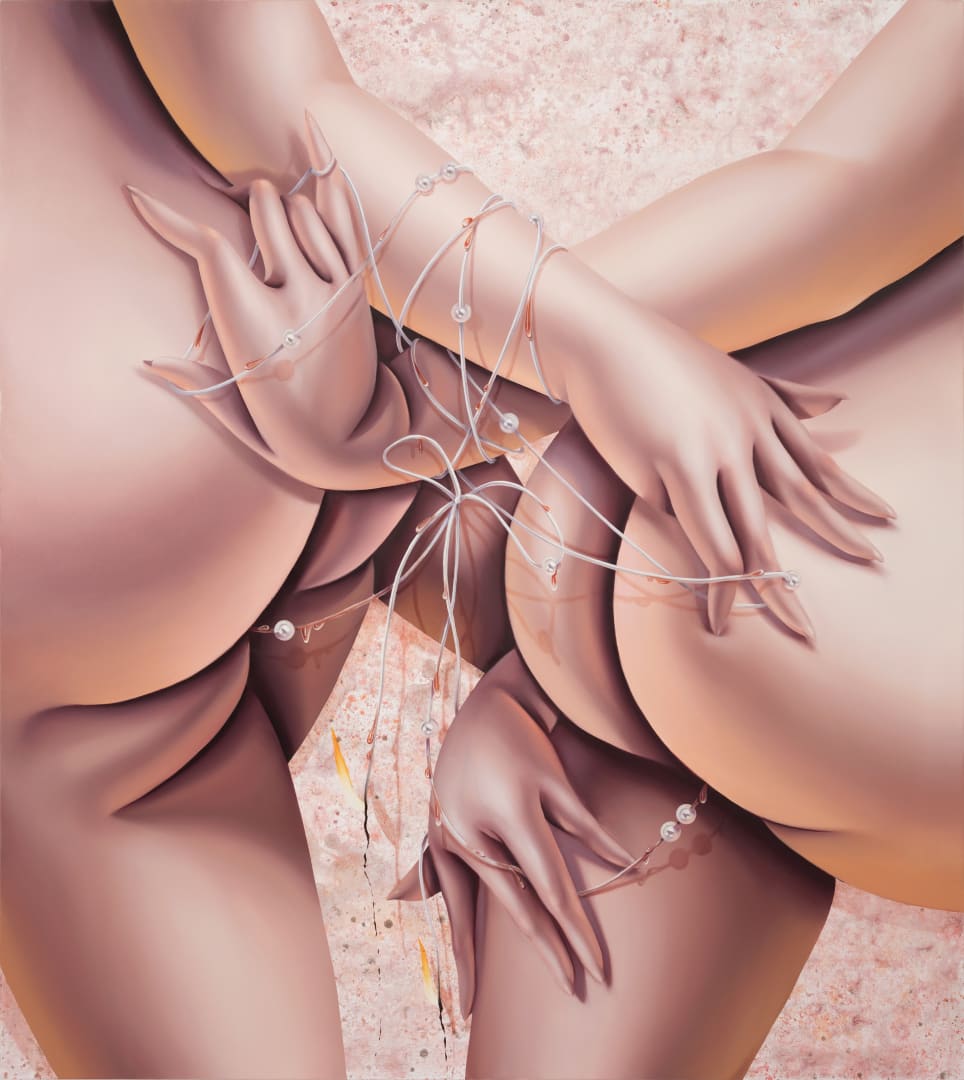Girlish longing and luxurious surfaces are integral to Sofia Coppola’s films. Their plots are secondary to their atmospheres, which are often decadent and swathed in nostalgia. Marie Antoinette (2006) is best remembered for its ornate, confectionary costuming and scenes of Kirsten Dunst, as the titular queen, bathing and eating cakes. Even The Virigin Suicides (1999), a story of suburban malaise in Michigan, presents its heroines, the five adolescent Lisbon sisters, with an otherworldly, golden glow.
Coppola’s characters don’t usually fare well. Schoolboys worship the Lisbons, to tragic effect. Everyone knows what happened to Marie Antoinette. Priscilla Presley makes off slightly better in Priscilla (2023), another story in which big hair and marital entrapment figure prominently. Throughout all these portraits of disaffected girls, Coppola reexamines traditional markers of femininity. Sometimes they’re frivolous. Sometimes they’re as serious as life and death.
Here are seven artists who embrace similar subjects and sensibilities. As the boys say in The Virgin Suicides: “We felt the imprisonment of being a girl, the way it made your mind active and dreamy, and how you ended up knowing which colors went together.” That’s great training, it turns out, for becoming a visual artist.
***
B. 1984, Columbia, South Carolina. Lives and works in New York.
Known for: Painting the binds of femininity
Beauty and pain are inextricably linked in Sarah Slappey’s paintings. She depicts sleek body parts being stabbed by pins and jewelry, or tied up in chains, bows, or strands of pearls. These images evoke the binds of femininity—something that Coppola’s subjects are all too familiar with.
Some of Slappey’s paintings feature grids, either rigidly straight or curved along with the figures. These guidelines are another kind of constriction—suggesting that painting itself, limited to two dimensions, is a bind. Slappey’s disembodied limbs and breasts bend and contort as if in protest. As bound as they may be, they still appear to be attempting to break free, to touch, to retain a strangeness they can call their own.

